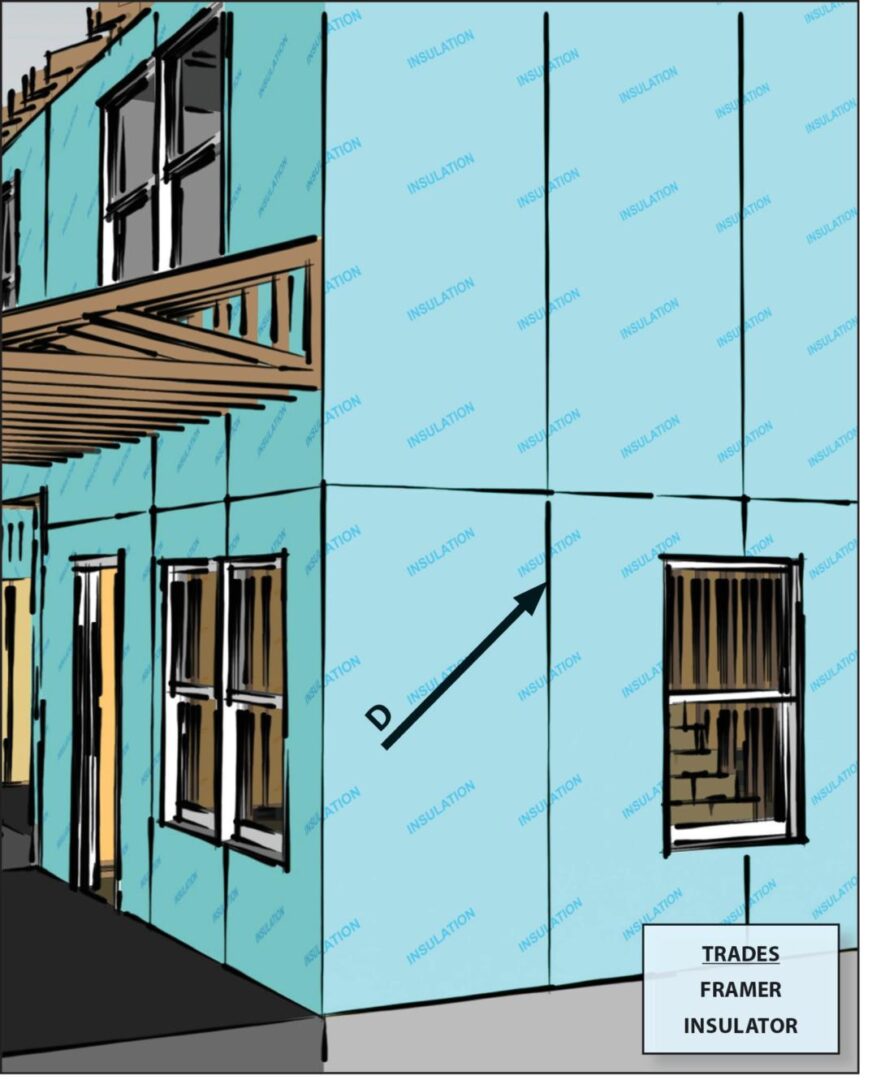Pros and Cons of Continuous Insulation (CI)
Continuous insulation is a building design practice where a continuous layer of insulation material is applied around the exterior of a building’s envelope, often in conjunction with other insulation methods. Here are some of the pros and cons of using continuous insulation:

Pros and Cons of Continuous Insulation (CI)
Pros:
- Energy efficiency: Continuous insulation can significantly improve a building’s energy efficiency by reducing thermal bridging and minimizing heat transfer through the building envelope. This can lead to potential energy cost savings, especially in cold climates.
- Depth flexibility: Continuous insulation depth is not constrained by the thickness of the wall framing. This means that it can be used to achieve higher R-values, which can further improve the energy efficiency of a building.
- Reduced air infiltration: Continuous insulation can help reduce air infiltration, which is the uncontrolled flow of air into and out of a building. Air infiltration can lead to heat loss in the winter and heat gain in the summer, which can increase energy costs. Continuous insulation can help seal up the building envelope and reduce air infiltration, which can lead to energy savings and improved indoor comfort.
- Reduced heat loss/gain: Continuous insulation can help maintain a more consistent indoor temperature, reducing the need for heating and cooling. This can lead to increased comfort and improved indoor air quality.
- Moisture control: Continuous insulation can help prevent condensation and moisture-related issues within the building envelope. This can extend the lifespan of the building and improve its overall durability.
- Improved comfort: With reduced temperature fluctuations, occupants may experience increased comfort and a more stable indoor environment.
- Design flexibility: Continuous insulation allows for flexibility in design, as it can be applied to various types of construction materials and configurations. This can give architects more freedom to create unique and aesthetically pleasing buildings.
- Code compliance: Many building codes and energy standards encourage or require the use of continuous insulation to meet energy efficiency and environmental performance requirements.
- Enhanced Retrofit Potential: Continuous insulation (CI) presents an excellent retrofit option for existing wood frame structures, offering a cost-effective avenue to elevate a building’s energy efficiency. The installation versatility of CI allows it to be applied either externally or within wall framing studs, accommodating various retrofit scenarios.
- Complementary with Cavity Insulation: The synergy between continuous insulation (CI) and cavity insulation results in augmented overall R-values. Cavity insulation, situated within wall framing studs, seamlessly partners with CI, which envelops the building’s exterior.
Cons:
- Installation complexity: Applying continuous insulation properly requires careful installation to prevent gaps, voids, or misalignment. This can be labor-intensive and may require specialized skills.
- Increased construction costs: The upfront costs of continuous insulation materials and installation can be higher compared to traditional insulation methods. This could impact project budgets.
- Exterior alterations: Adding continuous insulation to existing buildings or retrofitting it onto certain architectural styles might require modifications to the building’s exterior appearance.
- Fire safety: Depending on the insulation material used, there may be fire safety concerns, which could require additional fire-resistant measures to ensure compliance with building codes.
- Maintenance and repairs: If not properly protected, continuous insulation could be susceptible to damage from weather, pests, or other external factors. This could lead to maintenance or repair issues.
- Potential for condensation: In some cases, improper installation or selection of materials may lead to trapped moisture within the building envelope. This could cause mold, decay, or other moisture-related problems.
Overall, continuous insulation can be a valuable tool for improving the energy efficiency and durability of a building. However, it is important to weigh the pros and cons carefully before making a decision.
Rigid foam board insulation, such as EPS, XPS, and polyiso, naturally lend themselves to Continuous Insulation (CI) building methods. Green Insulation Group is a Worcester, MA based supplier of reclaimed / recycled / surplus foam board insulation. Using insulation boards that would otherwise be landfilled saves you money and saves the environment. Contact us today about your insulation needs or read our other helpful blog articles.
